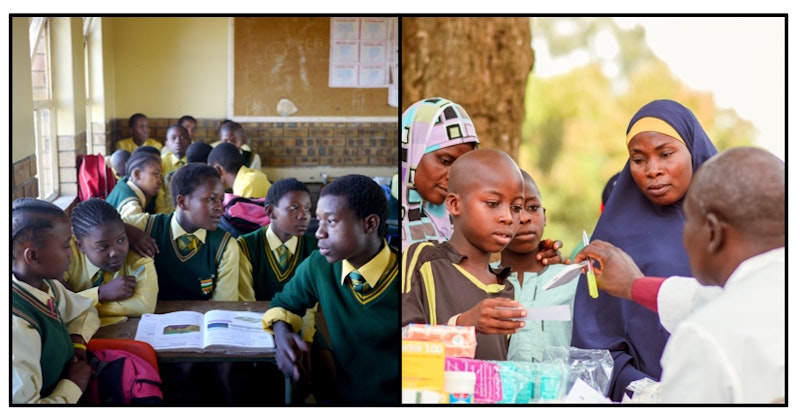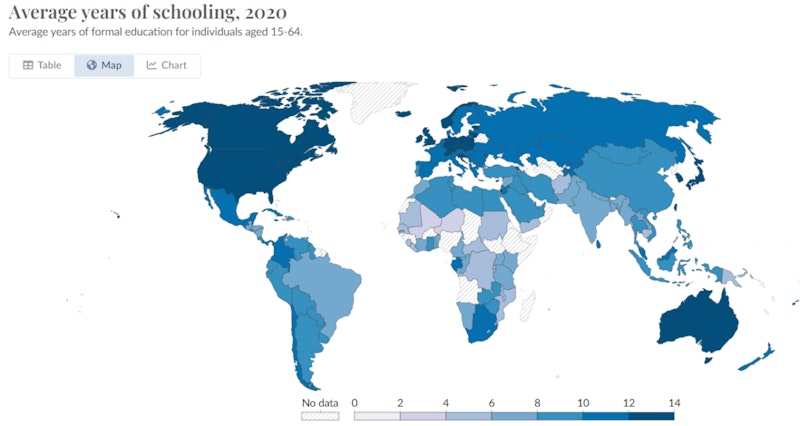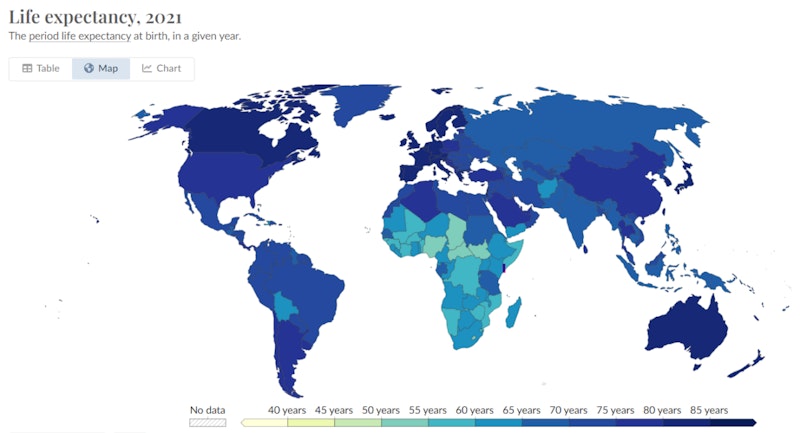Study Notes
GCSE Geography | Impacts of the Development Gap: Education and Healthcare (Development Gap 10)
- Level:
- GCSE
- Board:
- AQA, Edexcel, OCR, Eduqas
Last updated 17 Oct 2024
Uneven development has significant impacts has resulted in huge inequalities around the world, particularly in terms of wealth. The World Bank estimates that currently around 712 million people are surviving on less than $1.90 a day - this figure is used as a benchmark for those living in extreme poverty, lacking proper access to proper nutrition, clean drinking water, and adequate health services. However, the World Bank also estimates that almost half of the global population is living on $5.50 a day - meaning that they will also be struggling to meet their basic needs.
Uneven development means that there are differences in access to services that are vital for a good quality of life, such as education and healthcare. The level of poverty in many LICs and NEEs means that industrial development is limited, and therefore many people end up working in the informal sector where they don't pay tax. As a result there is less money for the government to spend funding important services.

Impact on education
In HICs education tends to be universal, i.e. all children attend school, whereas there are significant variations in access to education in LICs and NEEs. There are several reasons for this variation, including whether education is valued enough to fund it properly, whether families have to pay to send their children to school (which is the case in many LICs), and whether there are enough qualified teachers.
Average years of schooling tends to be lower in LICs and NEEs than in HICs - you can see this variation on the map below from Our World in Data - if you click on this link you can view a timelapse of how this has changed over the last 150 years, and can also click on individual countries for their specific data.
Generally children in HICs have between 11 and 13 years of schooling - with the highest figure in South Korea at 13.7 years. NEEs tend to have between 8 and 10 years of schooling, for example China has 9 years and Brazil has 8, perhaps surprisingly Brazil has the lowest average years of schooling in South America. In LICs has a larger variation - Mali and Niger have the world's lowest figures with 3 and 3.5 years respectively, however in Zimbabwe children are attending school for 8.3 years.

Finally there is a gender divide with education in some developing nations - there are several countries across the world where girls are denied a proper education. The most notable example of this is Afghanistan where the Taliban gained control of the government in 2021 and immediately banned girls from attending school or further education.
Impact on healthcare
LICs and NEEs have less access to adequate healthcare - particularly in rural areas. Access to education affects the number of qualified doctors and nurses meaning that the number of patients per doctor is very high, so it is harder to make appointments. In addition, a lack of investment means it is difficult to fund hospitals and clinics, vaccination programmes and education initiatives that highlight the importance of family planning and hygiene. In many LICs and NEEs people have to pay for healthcare appointments, which is unaffordable for many.
As a result, life expectancy is significantly higher in HICs than in NEEs and LICs - as you can see from the World in Data map below. You can see how global life expectancy has changed since industrialisation on this interactive map, and you can click on individual countries to see their current life expectancy - https://ourworldindata.org/gra....
Most HICs now have a life expectancy of 80 years or more - Japan has the highest figure of 84.7, with Australia closely behind with 84.3. The UK currently has a life expectancy of 80.7 - which is the lowest in Western Europe.
Unsurprisingly the countries with the lowest life expectancy are found in Africa - however there are no countries with life expectancy below 50, which is a significant improvement over the last 20 years. Chad has the lowest life expectancy at 52.5 years. More surprising, the country with the second lowest life expectancy in the world is Nigeria at 52.7, despite being an NEE and having the largest economy in Africa. This is because there are still millions of people lacking access to clean water and sanitation, so deaths due to contaminated water are very high, particularly amongst infants. Industrialisation has also increased air pollution so more people are dying of respiratory illnesses.

You might also like

Chocolate mmm!!!!
26th February 2015

Quality of living rankings
4th March 2015

Gapminder for population and global development
19th March 2015

Millennium Development Goals (MDG's): How did we do?
9th July 2015
Oxfam's scandal could affect all global aid.
14th February 2018
The World is unprepared for future disease risk
22nd September 2019
PPE for Covid-19 increases development inequality
29th November 2020

TV recommendation: How to Survive a Dictator with Munya Chawawa
19th December 2022